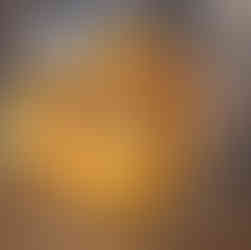
Determined to conquer my fear of making pastry crusts,I had a little extra time and decided to try and make a dessert tart. Specifically I made a Tarte aux Poires (Pear Tart). It was a good experience. I did not suffer any personal injury, although I did damage a utensil that I tell about further down. This wasn't exactly a thing of beauty. You could tell that it wasn't store bought, that's for sure. It did taste great though and everyone who ate it really enjoyed it. Let me tell you about it and then I'll share my pastry making conclusion at the very end.
This was a pretty involved recipe involving making a Pate Sablee (sugar crust), using short paste (Pate Brisee) and an apricot glaze (Gelee de Abricot). Many things I can't pronounce and have certainly never made before. If you've never seen Julia Child's "Mastering the Art of French Cooking" you don't fully appreciate how challenging following a recipe can be at times. You see, she doesn't simply put everything in a single recipe. First she'll explain a "master recipe" and then subsequent recipes will refer back to that master recipe. In this case, the recipe for the tarts are towards the back of the book, but her basic explanation for making crusts is a couple of hundred pages closer to the front. I probably had a half a dozen post-a-notes, old envelopes, and paper towel scraps inserted in the book as markers and kept madly flipping back and forth to keep track of what I was supposed to be doing.
The big lesson I've learned from Julia was keeping the ingredients cold. I, personally, don't have the time or patience to be starting the dough and then letting it sit in the fridge for an hour or two so I've had to compromise a bit and it seems to work. I use a metal mixing bowl that is nice and cold, and bigger than I actually need, and hold onto the top edge to keep the ingredients from warming up. I do use cold ingredients (butter, shortening, and cold water) and then mix it with a cold fork. Julia said I should use my hands to mix it but have to be fast to keep from warming up the dough. She said one needs to develop a feel for the dough -- sorry, but I thought it felt gooey and messy when I did it plus I was all stressed out about working fast and not warming the dough with my hands! Besides, she also said that one can stoop so low as to use a food processor to mix the dough -- using a fork seemed to be a reasonable compromise.
The ingredients for the "paste" were actually very basic -- 2/3 cup of flour, 1 tablespoon of sugar, 1/8 teaspoon of salt, 4 tablespoons of butter, 1 1/2 tablespoons of chilled shortening, and 2 1/2 tablespoons of cold water. Everything was smooshed together and then rolled out to 1/8" thickness. Following the recipe exactly didn't do me any favors -- next time I'll increase the amount of dough and also roll it out so that it is a bit thicker. I should have learned from my previous baking experience but Julia seems to be a bit stingy with the amount of dough we make. I never seem to have enough to completly cover the bottom and sides of the pan all the way to the top. Perhaps the spring-form baking pans I'm using just have sides that are higher than French ones? Also, rolling it down to 1/8" seems to make it much less forgiving and easier to poke a hole in. I suppose 1/8" is more delicate but for me, I think I'll start going for "industrial" strength instead of delicate.
Once I had the dough/paste into the pan, I lined the dough with a sheet of buttered aluminum foil and then filled that with dried beans. The weight of the beans keep the dough from raising. It really works, trust me. I did make a double batch of dough and had planned on making a second shell to use for a cold tart later. I thought I'd be daring and not use the bean trick. The bottom didn't raise up but the sides all completely collapsed down onto the bottom and I ended up with a nice pizza dough looking circle of tasty crust. It wasn't a complete waste -- we enjoyed snacking on pieces of the flaky crust!
While the crust was baking it was time for me to start working on the filling. This tart could be made the exact same way using apples but I decided to be different (I made an upside down apple tart previously) and use pears this time. Straightforward, very juicy and messy but straightforward. The pears were peeled, quartered, and the core was removed. about 3 pears were sliced in even, 1/8" slices and tossed in a bowl with a tablespoon of lemon juice and 2 tablespoons of sugar. These were set aside to be used for the decorative topping.
The rest of the pears were cut up into rough slices and cooked in a pan over low heat for about 20 minutes.
As the pears cooked, I prepared the mixture to be added next (have you noticed, I was actually pretty darn efficient compared to my earliest cooking attempts). 1/3 cup of apricot preserves were forced through a sieve to strain out the chunks of apricot, 1 tablespoon of vanilla extract, 2/3 cup of granulated sugar, and 3 tablespoons of butter were all mixed together.
I finished mixing that up just about the time the partially cooked crust came out of the oven and the pears were done with their initial cooking. The apricot/sugar mixture was poured into the pan and mixed thoroughly with the pears and brought to a boil over a higher heat.
By now the kitchen was starting to smell reallllllllly good, too bad I was home alone with no one else to enjoy it! I kept stirring continually until everything had thickened enough to be able to hold a scoop of the pear concoction in a spoon.
Now that the ingredients were finally done being prepared, it was final assembly time. You can see from the photo that I didn't trust the strength of my pastry shell enough to remove it from the springform pan. I decided (and this is completely allowed according to Julia) to leave the crust in the pan and then poured in the ingredients. It worked, without any major leaks. Just to be on the safe side, however, I did leave the pan on a sheet while it was baked. Better safe than sorry and better than having to clean out the oven if it did leak!
The first set of pear slices that had been set aside were then arranged on top in a decorative layer. I'm not the most creative person in the world but I think it looked pretty good! Everything then went back into the oven, at 375 degrees, for 30 minutes to finish baking.
While the tart was in the oven it was time for me make my first glaze ever. I've had a glazed look many times before but I had no idea how to make a glaze. Following Julia's instructions I was pleased to see that I'd need a candy thermometer. You may recall reading in one of my earliest posts about needing a candy thermometer and purchasing one -- to the aggravation of my sous chef, boss, and wonderful spouse Elizabeth. She seemed to think I'd never use it. Hah! Here it is, proof that I did indeed use it!
The ingredients for the glaze (Gelee de Abricot) were 1/2 cup of apricot preserves forced through a sieve to make it nice and smooth and 2 tablespoons of sugar. The ingredients were mixed together and then heated over moderately high heat for about 3 minutes until it was between 225-228 degrees (yay thermometer!). It could be made without a thermometer (shhhhhhh, don't tell Elizabeth) by heating it until it was thick enough to coat a spoon "and the last drops are sticky as they fall from the spoon).
I managed to time the glaze to be finished just as the tart came out of the oven. The glaze was then spooned and spread evenly over the tart and, voila! It was done!!
The only mishap I had was that I chose to use a disposable plastic spoon to stir the glaze as it heated. In case you didn't know, the plastic on the spoon melts at approximately 220 degrees...
The finished tart ended up looking pretty good for a first attempt and it tasted pretty good. Now, time to be honest... Will I ever make it again? Probably not. But here's why. First of all, I really am not a huge fan of sweets. I much prefer savory dishes. Second, this was a lot of work to produce a sweet dish. So, when I'm not particularly interested in eating something like this, why should I force myself to spend the time making them? Third, time. I didn't hit any major stumbling blocks on this but it still took a fair amount of time to make. If I have this much free time available, I don't enjoy baking tarts enough to want to spend my time making it.
That being said, do I regret having made this? Not at all! I learned a lot, it was fun making something new, it was nice to see that I really can make a tart if I want to. Maybe you enjoy making pies and stuff. If so, you should try this. Besides, it gives you a great excuse to get a candy thermometer!
Bon Appetit!


















































Comments